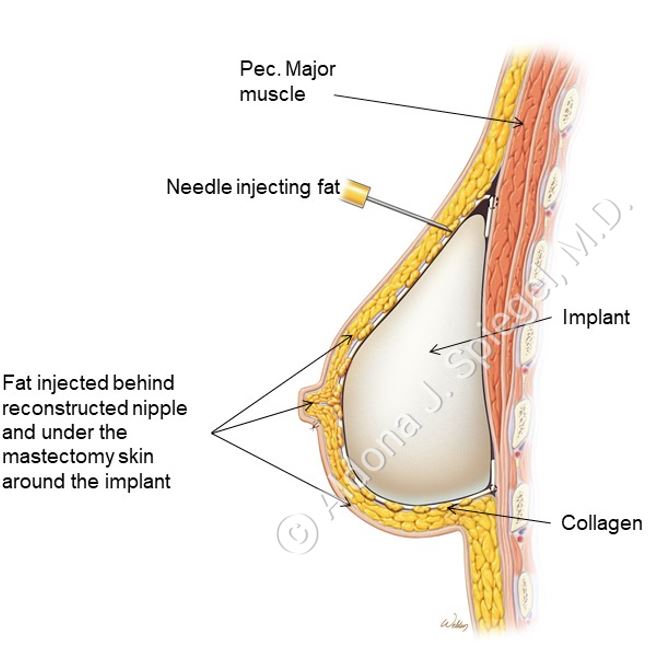Posted November 02, 2022 in Reconstruction
What is fat grafting and what to expect after your procedure
Fat grafting is a surgical procedure where fat is taken from one area of the body, through liposuction, processed, and then grafted (injected) into another area of the body. Liposuction is first performed on the chosen donor site (often the abdomen or thighs) under general anesthesia. The harvested fat is then processed and prepared for injection. This procedure involves a small incision at the liposuction site and no incisions to the breast, or site of fat injection.
In breast reconstruction, fat grafting is a useful technique to improve breast contour, specifically the transition zone between the mastectomy skin edge and the reconstruction. Fat grafting can also be used to improve breast symmetry and, if completed in stages, can build breast volume.
In addition, fat injections help improve the quality of radiated tissue, as radiation treatment often causes decreased blood flow and scarring in the tissue. Transferring new fat to this area can increase circulation, soften the tissue, and improve the quality of the skin due to the stem cell properties of the fat graft.
Fat grafting is often a second stage procedure performed after either implant reconstruction or reconstruction using your own tissue. Fat transfer to supplement breast reconstruction is a widely accepted procedure. The careful harvesting, processing, and injection of fat has proven to be a safe and effective technique. Fat grafting has not been shown to increase a patient’s risk of developing breast cancer. Fat that is transferred can scar, and this scarred fat is sometimes evaluated with a breast ultrasound. The risk of scar formation can be reduced by fat grafting in stages to allow adequate blood supply to be available for all injected fat.
From a recovery standpoint, patients can expect to have bruising both in the area of liposuction and to the breasts where the fat is injected. Bruising typically resolves in 2-3 weeks and this can be faster in patients that use Arnica. Patients are required to wear a compression garment for 6 weeks after liposuction and cannot submerge in water until all liposuction incisions are healed. Pain is minimal with this procedure and is mainly soreness at the liposuction sites, which resolves in 1-2 weeks.
For more information regarding fat grafting please visit our procedure page. If you are interested in discussing this procedure option, please contact the office to schedule a consultation.

